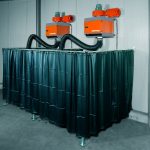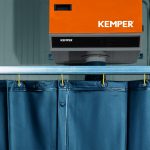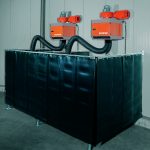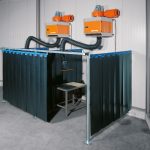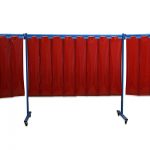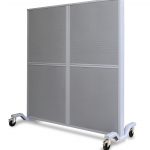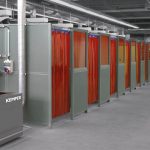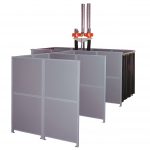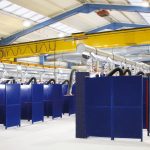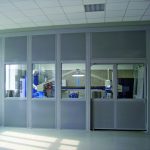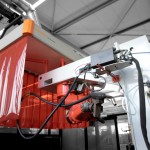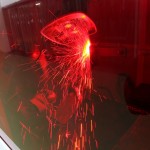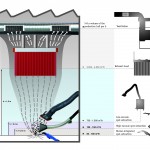Occupational safety using screens: important for bystanders during welding
Effective occupational safety in metalworking companies does not only make the welder’s work safer but improves the safety of every employee in the workshop. Radiation, noise and welding splatter also endanger bystanders around the workstation. Modern screening systems zone the welding workstations, protect against radiation reflections and are used as sight protection.
The welder himself is exposed to the greatest dangers when arc welding. This includes e.g. welding fumes, electricity, noise or high temperatures. However, also bystanders who are near to the welding workstations may be put at risk of hazardous substances if no appropriate safety measures are taken.
An example is ozone: This occurs as a result of the ultraviolet radiation from the oxygen in the air. The UV radiation is reflected on the bare metal surfaces and can cause ozone to form even at quite a distance from the welding workstation. This creates not only the particulate welding fumes themselves, but also a highly dangerous gas.
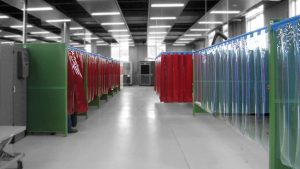 Screening and zoning individual workstations
Screening and zoning individual workstations
Therefore, the protection around the workstation is specifically important for effective occupational safety. Welding workstations have to be screened as much as possible to ensure that others such as crane operators are protected against radiation, noise and welding splatter. Curtains, partitions or translucent screens as per DIN EN ISO 25980 are fit for this purpose.
The screens have to meet several criteria. Their spectral reflectivity (ratio of reflected radiation to occurring radiant power) has to be less than ten percent. The light transmittance on the other hand has to be above 0.0001 percent. This value describes the proportion of light which is transmitted from outside to inside through a glass pane. A system for screening may only allow a maximum of 20 percent of a change of light transmittance during the welding process.
At the same time, companies have to consider several aspects during application: Screening against optical radiation or sound should not completely reach the floor. The reason is that air should access the lower part of the room as freely as possible during welding. Furthermore, welding curtains and strips or screens are not necessarily a substitute for welding protection filters. These are necessary, when welding arcs are observed from a distance of less than two meters.
Room situation determines screens
The range of screens for welding workstations is extensive. Operating companies of welding workshops have to therefore decide which systems are best suited for their workstations. Here are the most important possibilities:
Welding protections curtains
Welding protection curtains and panel curtains can be fitted to a pipe or a C-profile. They are easily moved laterally and therefore flexible in use. Their material is also self-extinguishing.
Welding protection lamellas
Welding protection lamellas also made from a self-extinguishing material. However, they have some advantages in comparison to curtains: The size of the single lamella and their degree of overlap can be selected individually. You can pass through at several points of this screen. The individual elements can be moved to either side. Workpieces can also be pushed through at various positions.
Welding screens
Welding screens can be used in any position thanks to their low weight and can be moved at any time. Furthermore, they can also be covered or hung with lamellas or curtains.
Sound insulation and partition systems
Sound insulation and partition systems often consist of several modular individual components which are put together individually and can be interconnected. They are often constructed into open or closed cabins which are normally used in training facilities. Powerful models are equipped with sound insulating cassettes and UV-ray reducing powder coating.



